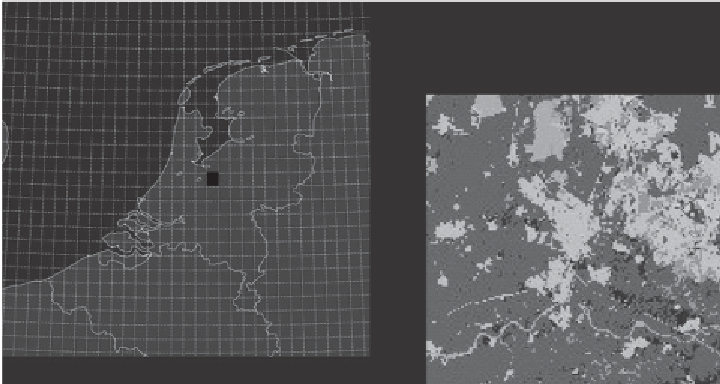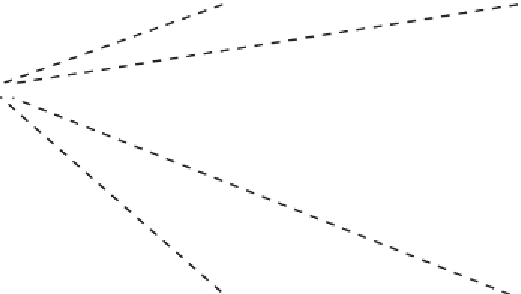Geoscience Reference
In-Depth Information
Figure 9.16
Typical grid of a high resolution atmospheric model (grid size 22 km)
overlaid on the Netherlands. Enlargement: land use within a single grid box.
9.2.5 Surface Heterogeneity
The land surface is strongly heterogeneous, both in its properties (i.e., albedo, soil
type etc.) and in its state (snow cover, soil moisture content, soil temperature). Within
seemingly homogeneous landscapes with a single land use type, heterogeneity already
may play a role (e.g., variations in LAI). But in the current context variations of
land use type (e.g., forest vs. urban environment) and vegetation type within a single
model grid cell is our major concern (see
Figure 9.16
). Each of these land-use types
will have a different energy and water balance and hence will deliver different luxes
to the atmosphere.
There are two main categories of methods to deal with this heterogeneity:
•
The surface within a grid cell is treated as one single land-use type. The parameters for
that surface are constructed from the parameters of the different surface types within the
grid. Various methods for the construction of effective parameters exist (e.g., Chehbouni
et al.,
1995
; Arain et al.,1997; Intsiful and Kunstmann,
2008
). The simplest averaging
scheme is to use the parameters of the dominant land-use type.
The surface within a grid cell is subdivided into a number subdivisions, each with its own
•
set of parameters.
The least spatially explicit form of this method is the statistical approach in which
•
only the statistical distribution of the parameters is given. With these distributions of
parameters a distribution of luxes can be constructed from which the grid-scale mean
luxes can be determined (e.g., Avissar,
1992
; Bonan et al.,
1993
).
The next step is to group similar parts of the landscape into a single land-use type
•
(e.g., low vegetation, open water): although some land surface parameters may vary


Search WWH ::

Custom Search